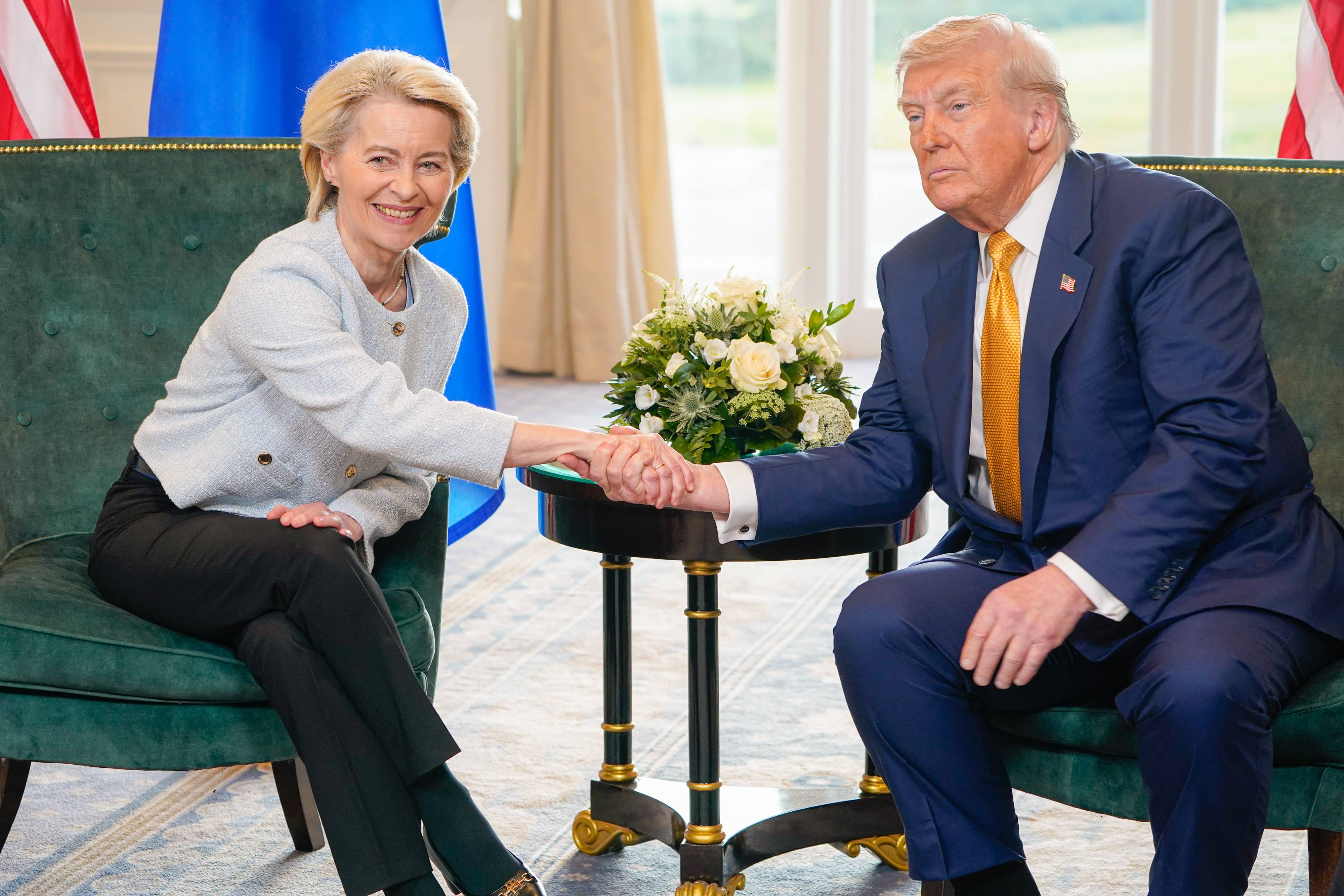
Image © Adobe Images
Pound Sterling is at risk of falling significantly further against the Dollar.
The unwind of major FX market trends is underway, spelling further weakness for the Pound to Dollar exchange rate (GBP/USD).
A EU-U.S. trade agreement reached on the weekend marks a pivotal point in the 2025 market narrative that shifts the focus away from trade tensions and onto other drivers that are more favourable to the Greenback.
Trade uncertainty was the main engine of Dollar weakness in the first half of the year, which allowed Sterling to slip higher in its wake. The deal halts the trend.
"Some of this year's highest conviction trades are becoming a little stale," says Chris Turner, head of FX research at ING Bank.
The Euro-Dollar exchange rate saw the biggest fall in the wake of the deal's confirmation, falling 1.30% on the day, while the Pound-Dollar sank 0.63%, reaching 1.3323.
Where the Euro-Dollar previously pulled Pound-Dollar higher, it could now drag it lower.
"The fact that GBP/USD has now broken under 1.3370 support suggests sterling can sell off alongside the euro. There is a technical case now for GBP/USD to trade down to the 1.3150 area. That is our preference in a week where we think the event risks are skewed to the positive for the dollar," says Turner.
Torsten Sløk, Chief Economist at Apollo, one of the world's largest asset managers, says a recent spell of underperformance by the Dollar is potentially coming to an end as the drivers of weakness in the first six months of this year fade.
"Looking ahead, with Section 899 behind us and the trade war likely to be resolved within the next couple of weeks, the U.S. dollar is expected to appreciate again," he explains.

Above: von der Leyen and Trump reach an accord in Scotland, Sunday. Photographer: Fred Guerdin. European Union, 2025. Source: EC - Audiovisual Service.
The trade war meant that currency markets diverged away from their traditional drivers, which meant the Dollar should have been better supported over recent months. But on the resolution of the trade war, Slok says those drivers can reassert in favour of USD gains.
For one, U.S. interest rates are still more attractive than in most developed economies, which should ensure a steady flow of international capital into U.S. markets to the benefit of the Dollar.
This is underpinned by robust economic data that suggests there is limited negative tariff impact, certainly not enough to cause a recession that many thought might occur.
The AI stock boom is still underway, promising outsized gains in U.S. markets, which should also attract capital.
In short, the U.S. exceptionalism trade that was a feature of recent years could be starting to recover.
"GBP/USD is struggling to contain the downside as it pushes to a 10-week low below 1.3350. Unlike the US, the UK economy faces an increased risk of stagflation, with inflation proving to be sticky in some areas of the economy, whilst growth is struggling to keep up. The loss of confidence in UK assets could weigh further on the pound, at a time when the dollar is recovering some appetite, which could see GBP/USD continue to face downside pressure," says Daniela Sabin Hathorn, senior market analyst at Capital.com.
Ahead for the Dollar is the midweek Federal Reserve decision, where rates should be left unchanged, and guidance should continue little appetite for agressive rate cuts. This can help USD.
With investor focus turning back to economics, Friday's job report will be the main event of the week.
"The dollar strength so far looks to be positioning on easing trade uncertainties but a cautious Fed and solid labour market data this week could see the move extend – a break below 1.1500 in EUR/USD would suggest the move could prove more extensive," says Derek Halpenny, Head of Research for Global Markets at MUFG Bank Ltd.
